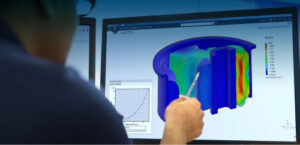The automotive industry is undergoing a radical transformation with the rise of electric vehicles (EVs). As consumer demand for greener alternatives increases and governments push for stricter emissions standards, automakers are accelerating their efforts to develop EVs. However, designing electric vehicles comes with its own set of challenges, particularly in terms of battery integration, lightweight construction, and energy efficiency. This is where digital design tools like SOLIDWORKS play a pivotal role. By streamlining the design process, enhancing collaboration, and improving simulation capabilities, SOLIDWORKS accelerates the development of electric vehicles, helping automakers bring these cutting-edge vehicles to market faster and more efficiently.
One of the primary advantages of SOLIDWORKS in EV development is its ability to simplify complex designs through 3D modelling and parametric design. Electric vehicles are fundamentally different from traditional vehicles, primarily because of their powertrains and battery systems. Designers must create integrated solutions that accommodate large battery packs, advanced electric motors, and efficient cooling systems while maintaining optimal vehicle performance. SOLIDWORKS allows engineers to model every component of the EV, from the battery and charging system to the motor and drivetrain, ensuring that these parts integrate seamlessly with the rest of the vehicle. The parametric design feature of SOLIDWORKS is particularly useful in EV development, as it allows engineers to modify one part of the vehicle’s system, such as the battery, and automatically update all related components. For instance, if the dimensions of a battery pack change, SOLIDWORKS ensures that the surrounding structure, wiring, and mounting systems adjust accordingly. This not only saves time but also prevents costly errors that could arise from inconsistent design changes across various parts of the vehicle.
When it comes to electric vehicle design, weight reduction is one of the most important factors in improving overall performance and range. A lighter vehicle requires less energy to move, allowing the battery to last longer and providing a better driving experience. SOLIDWORKS aids in this process by offering advanced materials libraries and tools that enable engineers to explore various lightweight materials, such as aluminum, carbon fiber, and composites, for different parts of the vehicle. Engineers can evaluate how these materials affect the performance of key components like the chassis, body panels, and structural supports, making it easier to design EVs that are both lightweight and durable. In addition to weight reduction, the integration of batteries and power electronics requires careful consideration of cooling systems to prevent overheating. EVs rely heavily on efficient thermal management to maintain battery life and ensure optimal performance. SOLIDWORKS provides advanced thermal simulation capabilities that enable engineers to test the heat dissipation capabilities of various parts, including the battery pack, motor, and power electronics. With SOLIDWORKS’ Flow Simulation module, engineers can model the airflow around these components, simulate temperature distribution, and optimize cooling systems before physical prototypes are built. This ensures that the EVs will operate at peak efficiency under real-world conditions, helping to improve the reliability and safety of electric vehicles.
Another significant challenge in EV development is the integration of the vehicle’s electronic systems, including the battery management system (BMS), power electronics, and control systems. SOLIDWORKS simplifies the design and integration of these systems by offering tools that allow engineers to create detailed 3D models of the vehicle’s electrical components and wiring systems. The software helps ensure that all components fit within the vehicle’s design, reducing the risk of interference or clashes between parts. Additionally, SOLIDWORKS’ electrical design tools allow for the creation of accurate wiring diagrams and simulations of the vehicle’s electrical systems, ensuring that power flows efficiently throughout the vehicle.
Finally, SOLIDWORKS fosters collaboration among cross-functional teams working on electric vehicle projects. EV development often involves multiple disciplines, including mechanical, electrical, and thermal engineering. SOLIDWORKS allows these teams to work together in real time, sharing design files, making updates, and providing feedback. With cloud-based collaboration tools, all team members can access and contribute to the design process, ensuring that everyone is aligned on the project goals and timelines. This collaborative approach helps streamline the design process, reduce errors, and speed up time-to-market.
In conclusion, the development of electric vehicles is a complex process that requires innovative solutions and a highly efficient design process. SOLIDWORKS offers the tools necessary to meet these challenges by providing engineers with powerful 3D modeling, simulation, and collaboration capabilities. From weight reduction and thermal management to system integration and performance testing, SOLIDWORKS accelerates every aspect of EV development, enabling automotive companies to bring high-quality, energy-efficient electric vehicles to market faster. By leveraging digital design tools like SOLIDWORKS, automakers can not only meet the growing demand for electric vehicles but also drive innovation and sustainability in the industry


